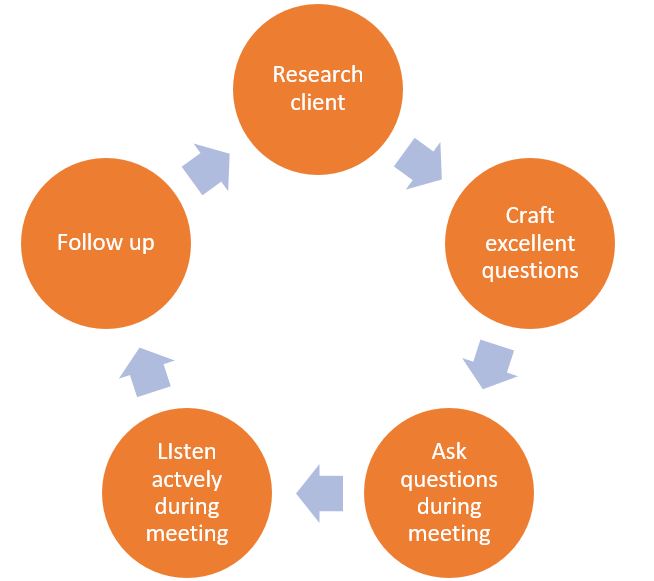The skills that a lawyer uses to build a personal connection with a client are largely the same skills that are needed to build one-on-one personal connections with the other lawyers and staff members with whom the lawyer works.
This core thesis, which the Thomson Reuters Institute has been highlighting for a while now, is critical to win in the über-competitive war for talent.
Now, more than ever, there is a need for scaling trust-building into the day-to-day efforts of managing talent well, and we consulted with Julie Henson, chief client officer at the law firm Taft to understand how it’s done.
Developing trust through action
Henson starts with active listening and does so without an agenda. This is the number one requirement for trust in any relationship, she advises. Great listening skills occur when the asker of questions adapts their communication style to the person with whom they are interacting; asks open-ended questions about the person and their unique strengths, needs, and concerns; and demonstrates an in-depth understanding of the person by paraphrasing back what they heard to confirm accuracy of understanding. Doing this well also involves hearing what is said and what is not said, while observing nonverbal cues. At a high-level, see the graphic below for a depiction of the primary approach that Henson uses at Taft.

To demonstrate how this trust-building process works, Henson explains that, with a new client, the first step is being prepared for the meeting with the client’s general counsel. Performing this preparation research allows her to craft excellent questions ahead of the meeting, Henson says.
During the meeting, Henson notes that she prioritizes building a personal connection. To do this, she asks the GC about their career trajectory, how the person made it to their current position, and how their career inflection points influenced decision-making in choosing one career pathway over another. Along the way, Henson uses active listening skills to pick up tidbits of the GC’s career story that matter in building the relationship. It is only after a personal connection is made that she transitions the conversation to the firm’s business by asking questions such as, “How can we as a firm add value beyond our legal work?”
After the meeting, Henson sends the GC a summary of the conversation along with several suggestions that she plans to take back to the team at Taft to address the client feedback.
Applying the trust-building framework
To apply the framework internally, it is important to connect the listening and relationship-building used to deliver high-quality legal services to clients on how these skills can directly impact quality career and skills growth for junior attorneys.
In one-on-one meetings — Creating regular opportunities to connect by scheduling recurring one-on-one meetings with individual lawyers is definitely the first step. Indeed, trust-building occurs through consistent and re-occurring interactions between junior lawyers and firm management.
At the start of the meeting, check in and ask, “How are you doing?” — not as a pleasantry, but to get below the surface and understand how the lawyer is really doing. Doing so allows the attorney the opportunity to share what is going on beyond work, if they choose, or to discuss a work challenge. Close out the meeting by asking, “How can I support you?” to demonstrate management’s ongoing concern with the well-being and career advancement of the lawyer.
Giving feedback — In this current environment, making feedback more fluid and consistent beyond the annual performance evaluation is key and can help lawyer retention. Senior attorneys should be giving concrete feedback to junior lawyers on specific assignments and tasks during regular back-and-forth exchanges more often. Indeed, increasing the repetition of the feedback interplay in and of itself creates trust.
There has been a lot of discussion around the generational differences and expectations around feedback. To be successful, givers of feedback may need to evolve their delivery and wording to better minimize the experience of aggressions during informal feedback and evaluation conversations. This is a new dynamic for seasoned lawyers, and it is imperative for law firms to invest in training for all partners and supervisors to understand the differences in how feedback is delivered and can be perceived by the receiver.
Increasing the quality of feedback also means equipping supervisors and managers in a digital-first world. This is a new operating model for law firms that require new strategies; and, to be honest, no one organization has figured out yet how to train their managers at scale on these new skills.
For any manager or supervisor at a law firm in 2022, balancing business commitments — ensuring the team is meeting or exceeding business goals, staying abreast of the fast-paced head- and tail-winds of clients, and managing people across a multigenerational workforce — are steep challenges, especially when doing so in a hybrid work environment. Reaching a solution to provide great people management may be simple, but implementing that solution with competing demands on time and mental bandwidth is not easy.
The legal industry, along with a multitude of other industries and professions, is experiencing a slow-moving wave of change that makes the mastery of the uncomplicated formula of building and sustaining trust by active listening and asking good questions one of the key ways to navigate this change with success while keeping your best talent.
This article was originally published by the Thomson Reuters Institute, the Thomson Reuters thought leadership forum.


